- June 27, 2019
- Posted by: SportsV
- Categories: Event News, Home News, Industry News, News, Press Releases
The idea of constructing a hockey pitch in a stadium for one-off international matches has never been a possibility, that is until now. Thanks to a ground-breaking partnership spearheaded by England Hockey, this dream is now a game-changing reality.
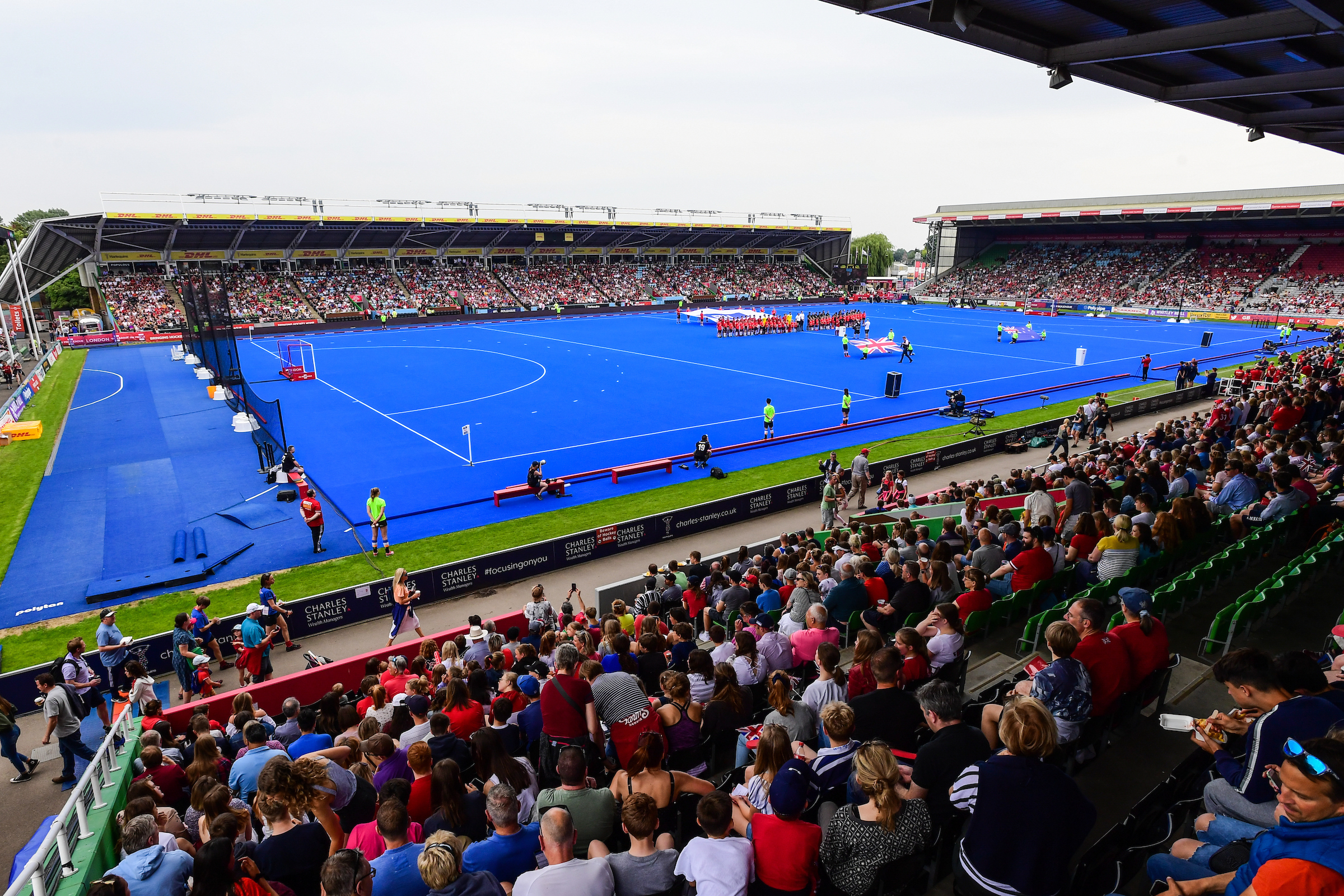
Working with our partner Polypipe we installed Permavoid, which allowed us to build a hockey pitch over the existing rugby pitch, providing a strong base, enabling the grass to keep growing and supporting drainage. We also used the new hockey turf developed by Polytan for the Olympic Games in Tokyo next year, which requires up to 65% less water than other pitches. The pitch used at The Stoop will later be installed at Bisham Abbey for the men’s and women’s teams to prepare for Tokyo, and the Bisham pitch will then move to Lilleshall for young players in the country’s National Age Groups. The pitch technology is ground-breaking; ourselves and partners retain the IP and all being well it can be used by other nations, stadia and events in the future.
This solution is very innovative because it is temporary, removable and repeatable. It is cutting edge technology and a patent has been filed to allow us to continue to develop this work. It is more flexible than the semi-permanent solution used in the Netherlands for the 2014 Hockey World Cups. Work began roughly 6 weeks before the games take place to prepare The Stoop and create a level field. Future plans would mean that the technology can be brought in and out more quickly (10-14 days).
This revolutionary project was spearheaded by England Hockey and their relationship with Harlequins Rugby. Sport England and the International Hockey Federation have also supported the scheme, which is aimed at further capitalising on the legacy of the London Olympics and championing the spectator boom that hockey has experienced in recent years.
Once the vision was established, a group of wider experts were pulled in to develop the world’s first elite portable pitch system, which included:
-
Polytan – FIH Global Partner and official hockey turf supplier for the World Cups and Olympics
-
STRI – natural sports turf research and development specialists
-
Polypipe – A group of innovative sub-base and water management experts
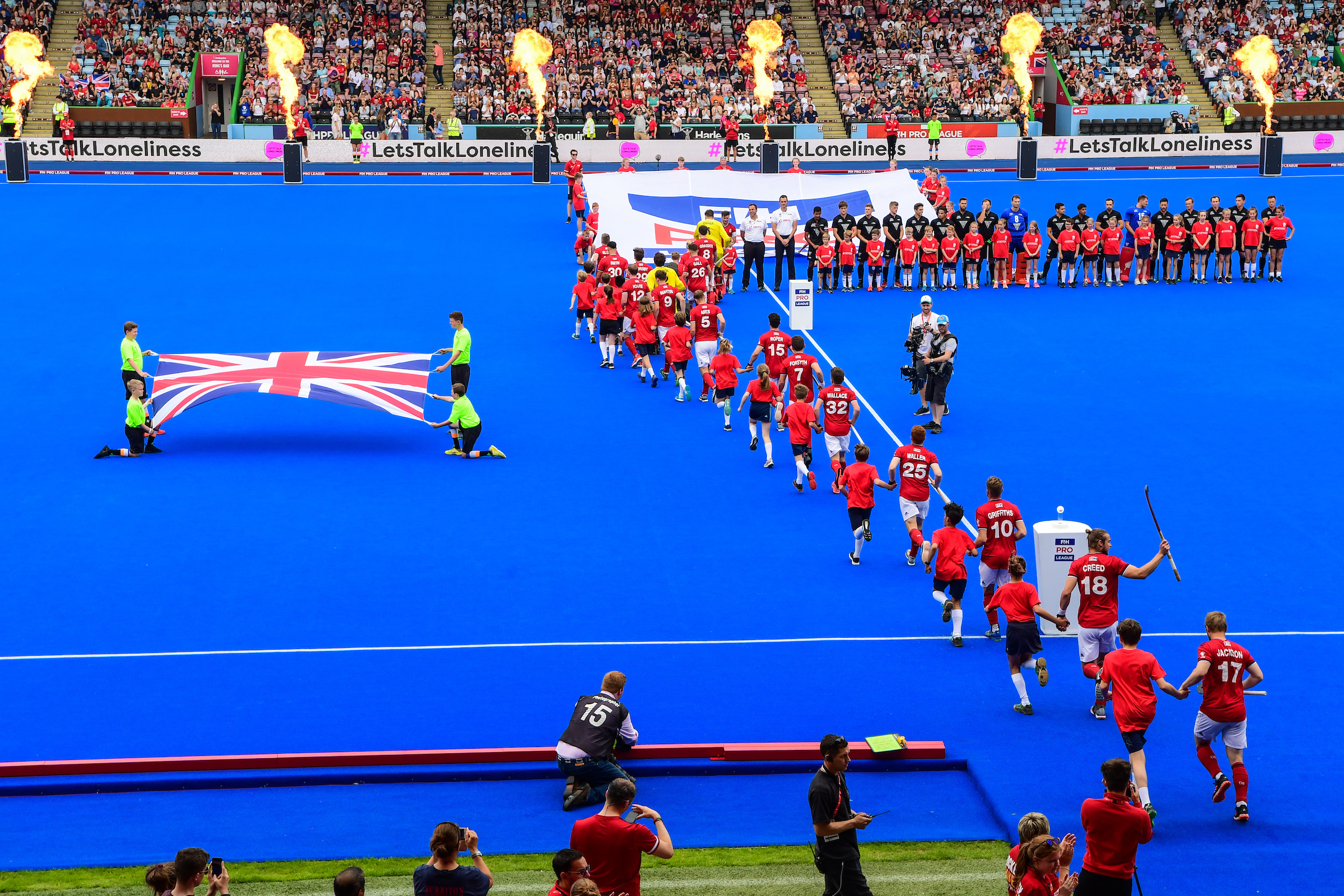
Challenges
The project had multiple challenges to overcome, many have never been attempted before within the sport. These included:
-
Developing and installing a temporary water pitch to elite standards. The surface had to be suitable for international matches and meet strict certification standards as outlined by the International Hockey Federation (FIH)
-
Protecting the natural grass. We had to create a system that would allow the natural grass underneath to breathe via adequate airflow
-
The ability for the system to be rapidly installed and removed. Tests showed we needed the portable pitch to be installed, played on and removed within 6-8 days or the grass underneath would die due to lack of sunlight. This speed was also necessary for future stadium utilisation, so that the stadium can be used for rugby and hockey on alternate weekends without compromising either sport
-
Needed to be re-usable. A system that would allow us to remove and store it, including rolling up the turf top layer to re-use it multiple times as a portable pitch and ultimately as a legacy surface at a permanent location
-
Low environmental impact. We wanted the system to have as low an impact on the environment as possible, supporting Polytan’s commitment to green technology solutions
-
Scalability and flexibility. The solution had to be adaptable for different sized venues in different locations without compromising performance
-
It needed to be cost-efficient and economically viable for all partners and stakeholders.
As a world first, this project has been breaking new ground from day one. It required a highly creative and collaborative approach, drawing on Polytan’s 50 years of industry knowledge and working closely with technical specialists from the wider industry.
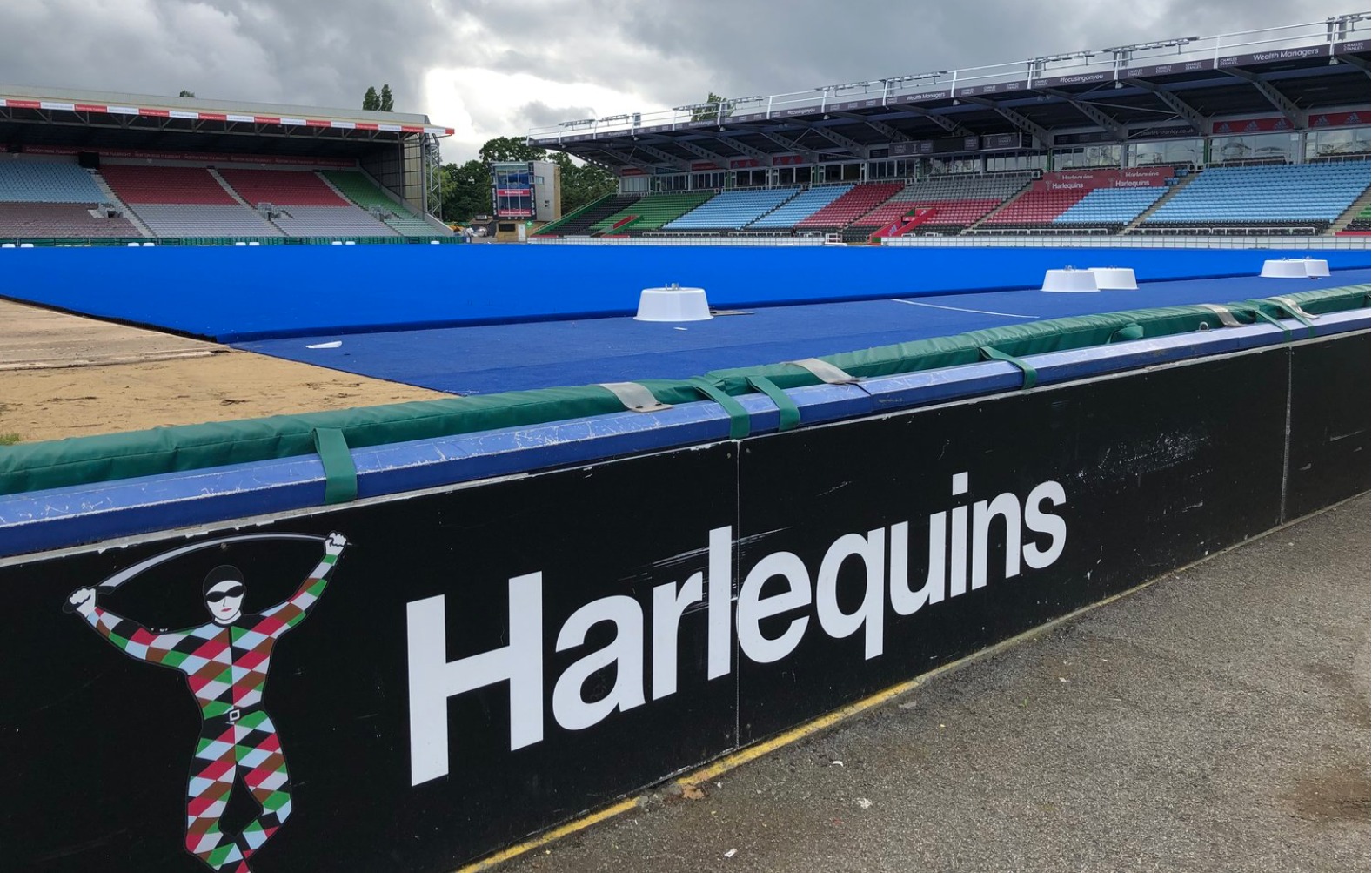
Establishing key requirements
World-first thinking demands an in-depth understanding of the fundamental requirements for success. As the world leader in hockey surfacing, Polytan understand what hockey players want from the pitch surface to perform at their best. Transferring knowledge from hockey-specific, highly engineered, permanent facilities into a temporary system overlying natural turf surfacing is what makes Big Stadium Hockey possible.
With a focus on player welfare and elite hockey performance expectations, Polytan has worked with the project team and the FIH to ensure that the portable system doesn’t just take hockey into big stadiums, but enables athletes to perform at their best on world-class facilities.
Testing & Proof of Concept
You can’t run before you walk and you can’t have Big Stadium Hockey before you know that the system will work. To make sure that the concept would be a success it was tested, tested and tested again, increasing in size and scale at each phase. This was important not just to identify the optimal system components and configuration for athlete welfare, pitch performance and health of the natural turf, but also to prove to the FIH that this radical thinking would not have negative outcomes for the sport.
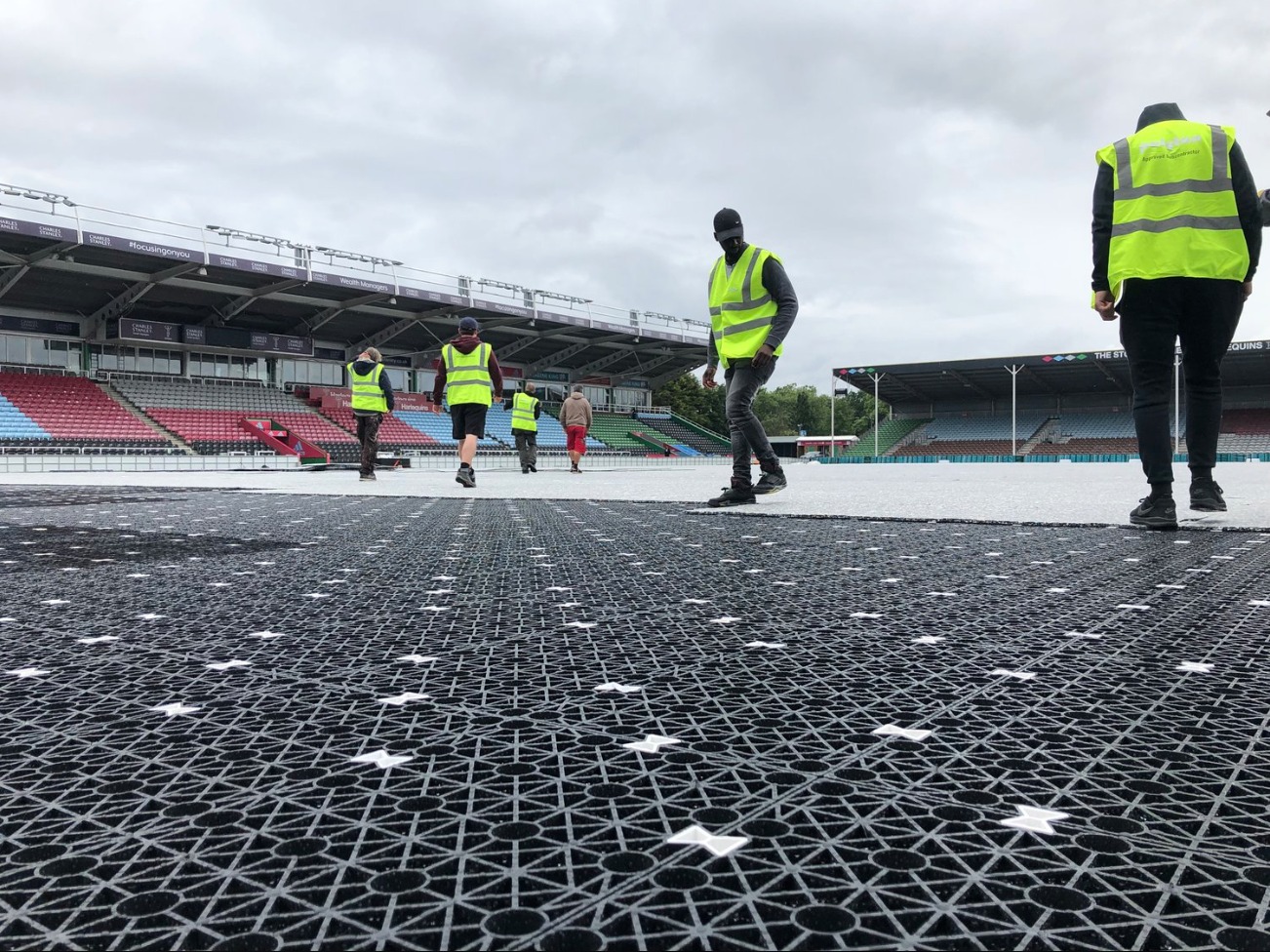
The project went through multiple test phases, including proof of concept testing and performance testing with various products and system configurations to identify the optimal solution. This process also included critical system validation testing with the GB Hockey squads on a 1,500m2 trial area. Testing included:
-
Establishing a quarter sized field at England Hockey high performance centre at Bisham Abbey National Sports Centre
-
Performance testing with male and female GB squad players in multiple sessions across two days
-
Player surveys and feedback to analyse key requirements from a hockey perspective in terms of pitch performance and player welfare
-
Independent system testing by FIH certified laboratory against FIH established standards for player performance, player safety and technical construction requirements such as flatness, uniformity and drainage
-
FIH representation onsite for full trial period.
Green Technology
The turf used at the Stoop is Poligras Tokyo GT, which is the surface for the Tokyo Olympic Games in 2020. This surface was designed to support Tokyo’s goal for a carbon neutral games and features filaments made from over 60% renewable raw materials (derived from sugar cane). Poligras Tokyo GT also requires up to 65% less water than surfaces used at previous Olympics, which is a critical consideration for a temporary installation without irrigation infrastructure.
Other aspects of the portable hockey pitch system incorporate recycled materials in their manufacturing. In addition, each system layer is reusable over and over, ensuring that Big Stadium Hockey is a sustainable model.
Taking hockey into existing stadiums also provides greater utilisation of existing infrastructure. This reduces the need for multiple stadiums each designed for the specific needs of individual sports. This doesn’t just enhance the experience for hockey fans, it makes economic sense and is better for the environment.
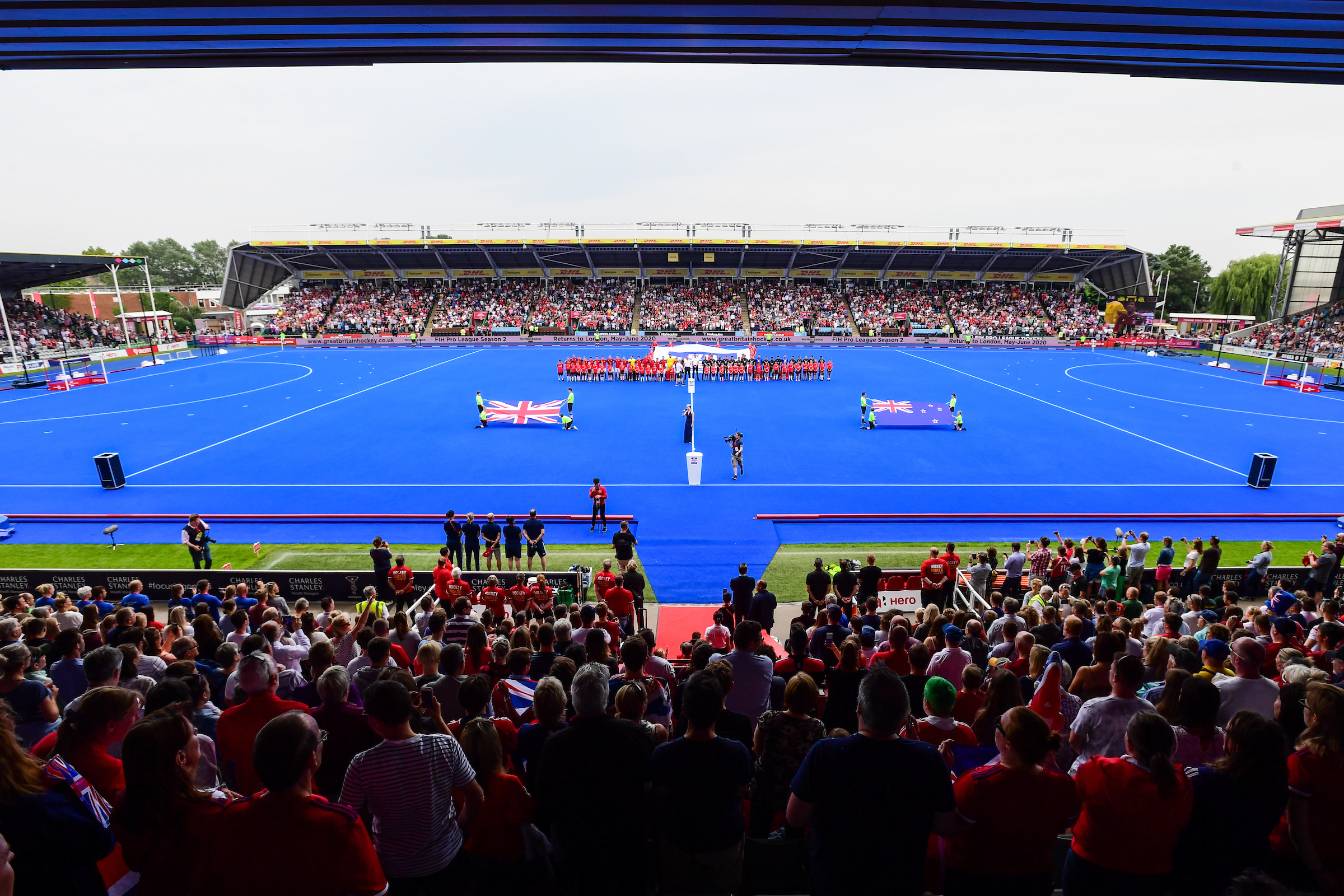
Proven results
This new technology is ground-breaking for the sport. Suddenly, hockey can be played in any venue, anywhere in the world. Previously restricted to hockey-specific venues, hockey now has the freedom to go where it wants.
The sport can now break free from small hockey venues and engage with new audiences in fan-friendly stadiums, with facilities and infrastructure that match players’ and fans’ expectations.
The world’s first elite level portable pitch system for hockey ensures:
-
The creation of a new category – FIH Certified. As a result of this project the International Hockey Federation is creating a new certification category for portable pitches
-
Improved utilisation of existing stadiums for owners and stakeholders. Previously Harlequins only had 16 home matches per season. This new portable pitch technology makes it possible for Harlequins to play rugby one weekend and hockey the next. This is great for everyone
-
An environmentally friendly solution. This breakthrough has been designed to be environmentally friendly; the system is reusable, it utilises existing venues, the turf is made from green technology and recycled materials are used in other elements of the system
-
Better fan experience at the venue. Larger stadiums mean more fans can access the venue to watch hockey live. More fans at the game means more noise, more atmosphere and a richer experience than traditional hockey venues. Big Stadium Hockey also gives the sport access to quality corporate facilities which are lacking at small venues
-
Better experience for broadcast audience. Larger stadiums offer better facilities for TV broadcast. Larger crowds also add to the televised spectacle, creating a better viewing experience all round.
Images, courtesy: Harlequins / England Hockey / Polytan / WORLDSPORTPICS
#sportsvenuebiz
#sportsvenuebusiness – the leading platform for sector news, views & developments

